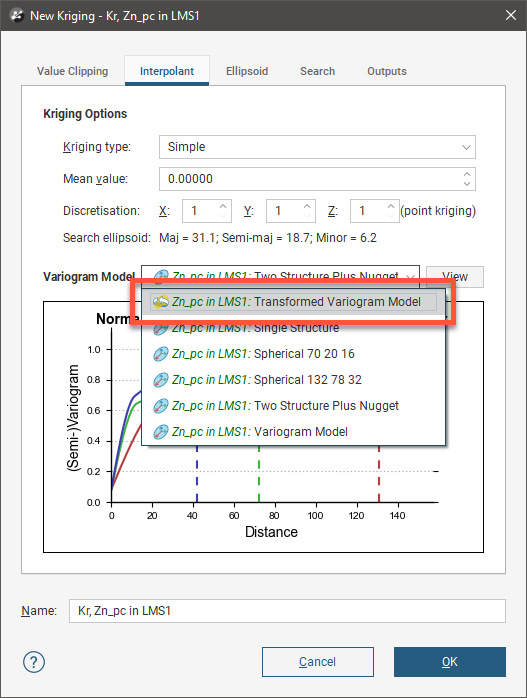Transform Variography
When data sets have highly skewed distributions, experimental variograms can be poorly structured and fitting a model can be difficult. Capping or discarding high values can help in certain situations but a better approach is to transform the data values into a more tractable distribution prior to calculating variograms. Transform variography offers a more general method that does not involve discarding or redefining data, reducing the effect that extreme values have on variogram calculations while retaining the ordering relationships between data values. Variogram models can be more easily defined and fitted in this transformed data space.
The transformed data cannot be used directly in estimations, however; transforming the data is solely for the purpose of fitting the variogram model. Having fitted the variogram model in transformed space, it is necessary to back-transform the variogram model before Kriging in the raw data space.
The rest of this topic describes creating and using transform variogram models. It is divided into:
- Transforming Values
- Creating a New Transform Variogram
- Viewing the Back Transformed Variogram
- Using Transformed Variogram Models
Transforming Values
To transform data, start with the Values object in a domained estimation: right click and select Transform Values. This will add a new set of transformed values to the project, saved under the parent object with the same name as the parent but with NS (for Normal Score) appended.
The transformation performed is a normal scores transformation, modifying the distribution of the data into a gaussian distribution. Thirty polynomials are used to fit a Hermite polynomial model that describes the transformation between raw and gaussian values. Negative values are clamped at 0. As a result of the transform, the effects of outliers and clustered data is ameliorated. There is no independent declustering or despiking applied to the values during transformation.
Drag the transformed values points into the scene to visualise them.
Statistics are available on the transformed values by right-clicking on them and selecting from the Choose Statistics Type options:
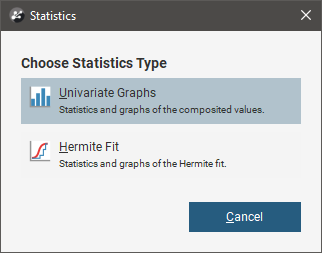
The standard Univariate Graphs option provides a histogram and other related plots of the transformed data. An option specific to transformed values, the Hermite Fit graph, has been added to show the fit of the Hermite polynomial to the cumulative distribution of the raw data.
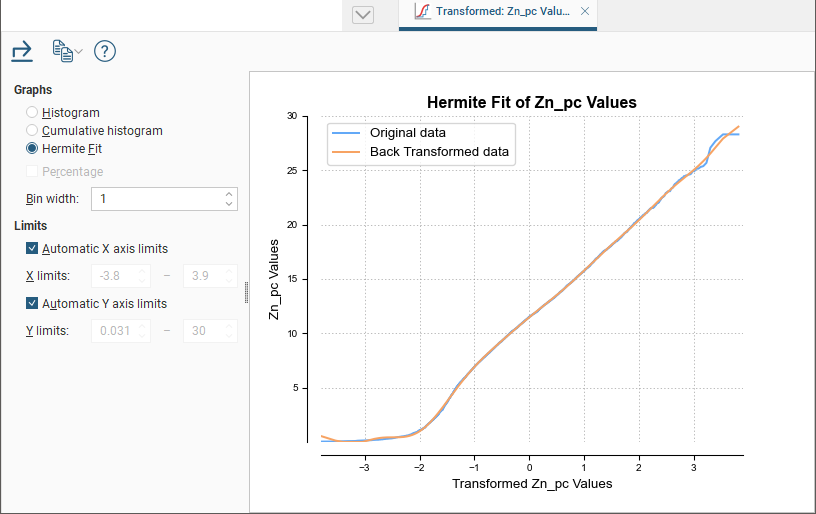
Creating a New Transform Variogram
Create a new transform variogram model by right-clicking on the Spatial Models folder and choosing the New Transformed Variogram Model option.
If multiple variogram models exist in the domain, a dialog will appear asking you to select which variogram model to use to obtain the experimental parameters for the new transform variogram model:
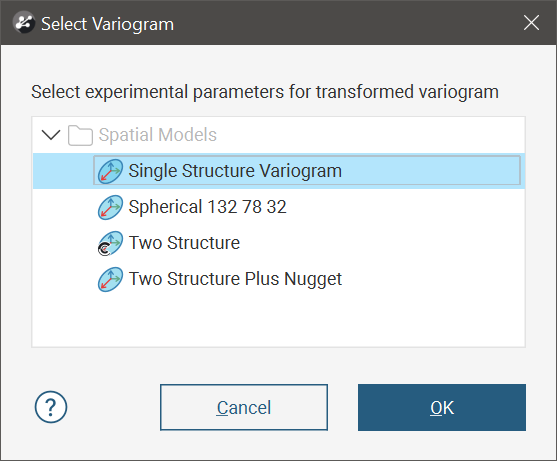
Once the new transformed variogram model has been created, you can perform variography and fit a variogram model as you would for a typical variogram model. As for the typical variogram, there is no automated fitting for the transform variogram. Note that:
- Capping has been removed.
- There is no normalised sill option.
- Variogram displays other than the semi-variogram are unavailable.
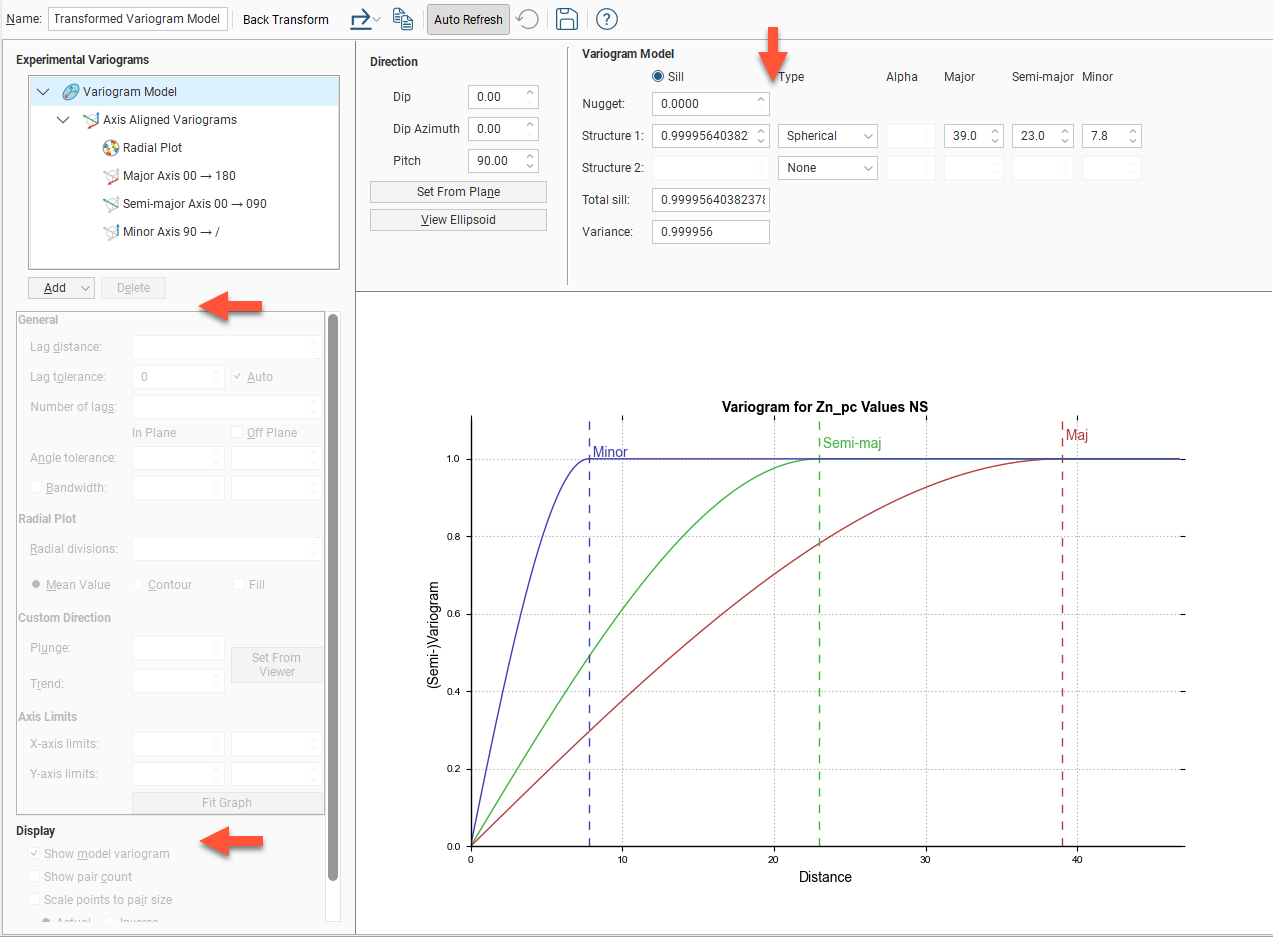
Viewing the Back Transformed Variogram
Once the model has been fitted to the transform variogram, click the Back Transform button to view the variogram model back transformed to raw data units. This is the model that will be used in any subsequent estimation.
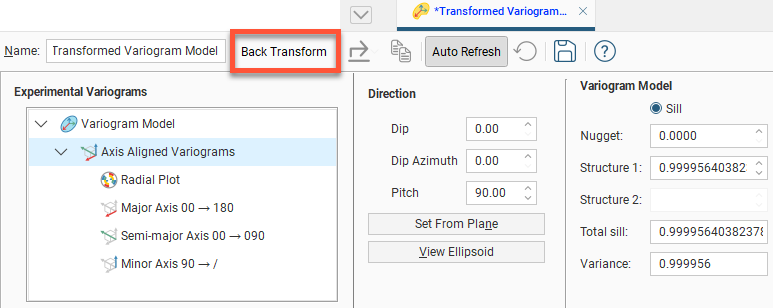
When in this view, the variogram model cannot be manipulated by directly editing fields or using handles. A summary of the variogram parameters and orientation is provided in fixed text fields at the top of the window, with the sill and variance information back-transformed into the raw data space. Go back to the transformed view to edit the model.

Using Transformed Variogram Models
The transformed variogram model is not available for use in Kriging as the relative nugget and sills of the model in transformed space are generally considered optimistic. Instead, the model is automatically back-transformed into the raw data space, where the back transformed variogram model can be selected for use in Kriging, just like any of the untransformed models.
